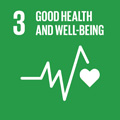- Docente: Carmela Fimognari
- Credits: 3
- SSD: BIO/14
- Language: Italian
- Teaching Mode: In-person learning (entirely or partially)
- Campus: Bologna
- Corso: Second cycle degree programme (LM) in Sciences and Techniques of Sports Activities (cod. 9069)
Learning outcomes
At the end of the course, the student knows the mechanism of action, the pharmacokinetics and the risk-benefit profile of drugs used in sports. Moreover, he/she knows the list of drugs and substances currently banned in sport, the toxic effects and the health risk of various drugs used as doping, and the World Anti-Doping Code.
Course contents
Drug abuse and doping: general aspects and epidemiology.
International regulatory aspects for doping : World Anti-Doping Code; Medicinal products subject to restrictions and their prescription in case of therapeutic use; request for exemption for therapeutic purposes; declaration of therapeutic use. The doping controls.
List of substances and medical practices considered doping.
Pharmaco-toxicological aspects of different classes of prohibited drugs:
S0 non approved drugs
S1 Anabolic agents: Anabolic androgenic steroids
S2 Peptide hormones: erythropoiesis-stimulating agents, growth hormone
S3 Beta 2-agonists
S4 Hormonal and metabolic modulators: aromatase inhibitors, selective estrogen receptor modulators, agents that modify the function of myostatin, insulins, PPAR-delta receptor agonists
S5 Diuretics and masking agents
S6 Stimulants: amphetamines, cocaine, ephedrine. Substances included in the monitoring program
S7 Narcotics: morphine, heroin, methadone
S8 Cannabinoids
S9 Glucocorticosteroids
Prohibited methods:
M1 enhancement of oxygen transfer
M2 chemical and physical manipulation
M3 gene doping
Prohibited substances in some sports:
P1 Alcohol
P2 Beta blockers
Doping and addiction
Doping and sudden/unexpected death syndromeReadings/Bibliography
Doping in Sport. Editors: Thieme, Detlef, Hemmersbach, Peter (Eds.). Springer, 2010.
Teaching methods
Lectures with multimedia support. The teaching material presented during the lectures is available on the "Insegnamenti On Line" plarform of the Alma Mater Studiorum - University of Bologna.
Assessment methods
The exam will consist in an oral test aimed at assessing the student's understanding and knowledge of the topics set out during the course. The examination consists of an interview. The student will get a mark for each course unit (Biochimica dell'attività sportiva, 3CFU - Pharmacology in sport, 3CFU). The marks obtained for each interview, in proportion to the number of credits, contribute to the final grade of thirty. The achievement by the student of an organic vision of the issues addressed during the course and the use of an appropriate specific terminology will be assessed with a mark of excellence.
To check exam dates, students can access AlmaEsami.
Teaching tools
Slides are usually used to enhance clarity during courses. The materials used will be uploaded to to the website https://iol.unibo.it
Username and password are reserved for students enrolled at the University of Bologna.
Office hours
See the website of Carmela Fimognari
SDGs

This teaching activity contributes to the achievement of the Sustainable Development Goals of the UN 2030 Agenda.
